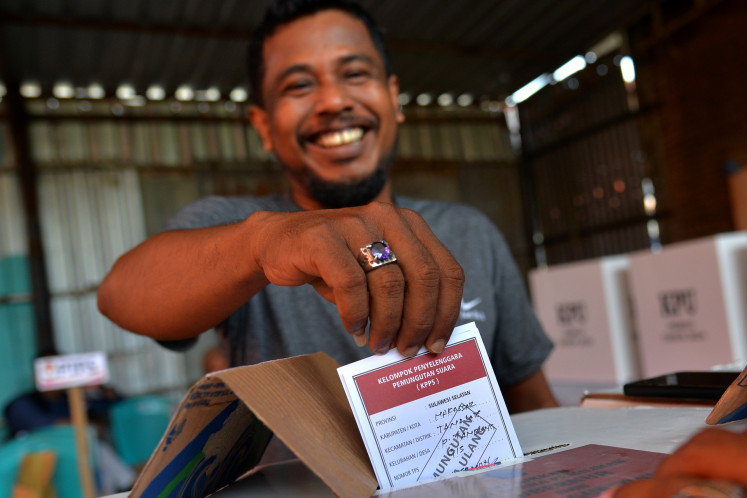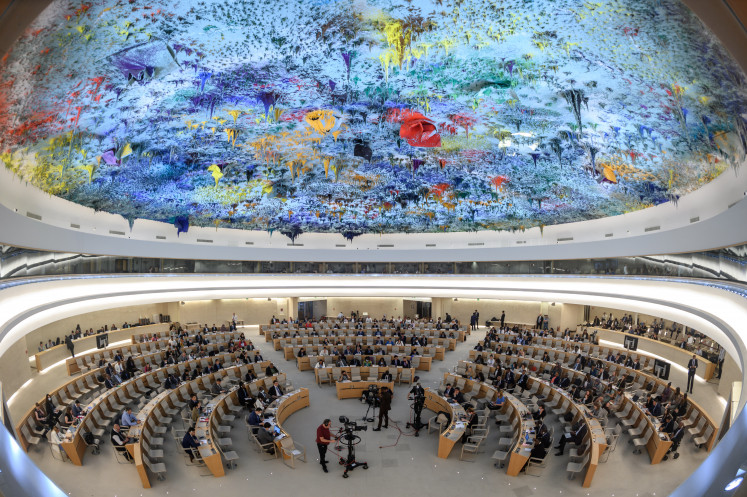Popular Reads
Top Results
Can't find what you're looking for?
View all search resultsPopular Reads
Top Results
Can't find what you're looking for?
View all search resultsAfter George Town, the Old Town follows suit
The small, quiet city of George Town in Penang, Malaysia, is popular among foreign tourists for its modest vintage shop houses and boutique hotels
Change text size
Gift Premium Articles
to Anyone
T
he small, quiet city of George Town in Penang, Malaysia, is popular among foreign tourists for its modest vintage shop houses and boutique hotels.
The town's listing as a UNESCO world heritage site in 2008 helped boost tourist numbers.
While the status is prestigious and attracts many foreign tourists, receiving and maintaining the status is not easy, as George Town has experienced.
George Town took more than 10 years to make it onto the nomination list, together with Malacca City, and a further 10 years to finally receive world heritage status.
Once it was named a world heritage site, George Town received an RM 20 million (US$6.08 million) grant from the central government to renovate and refurbish over 3,700 heritage buildings in the city.
The heritage sites are now managed by George Town World Heritage Incorporated (GTWHI) and its RM 20 million fund is managed and disbursed by Think City.
Think City executive director Hamdan Abdul Majeed said discussions to nominate George Town as a world heritage site had occurred since 1984.
'In 1980, architects, artists and conservationists gathered to discuss how to conserve George Town. Then we applied for world heritage site nomination in 1997,' Hamdan said recently.
Eight years later, in 2004, George Town and Malacca submitted their nomination file to UNESCO but were rejected. They revised their nomination and tried again in 2007, finally being granted world heritage site status in 2008.
Hamdan admitted that conserving George Town was a difficult job. 'We still have some difficulties. The danger of conserving is that the culture and the stories that came with the buildings would be lost,' he said.
'Imagine if you went to a city where all the stories were lost. Would it mean anything to you?'
Hamdan said that before the UNESCO world heritage site status, George Town was ailing due to the repeal of the Rent Control Act, which limited the amount of rent a tenant could be charged. After the repeal, tens of thousands of residents moved from the city, unable to pay their rent.
'George Town was barely alive. Its economy was dropping, the city was dying as there were no economic drivers,' he said.
Think City, in cooperation with numerous architects and conservationists, now disburses grants to building owners and tenants to conserve their buildings.
Meanwhile, Maimunah Mohd Sharif, who headed the GTWHI when it first started, said that one of the main challenges was persuading its residents to help maintain the heritage buildings. 'We had to explain to the building owners that they were living in a treasure and that they must cherish it,' she said.
Maimunah, who now serves as a municipal council president of Seberang Perai, said that she fought for the world heritage site status not for tourists, but for the residents of George Town.
'This status is for the Penangites [Penang residents]. Tourists are just a bonus,' she said.
Currently, the Jakarta administration and the Jakarta Old Town Revitalization Corporation (JOTRC), a consortium of private and state-owned enterprises, are scrambling to include the Old Town (Kota Tua) in West Jakarta on the nomination list for UNESCO's world heritage sites.
The consortium includes, among others, equity company Saratoga Capital, conglomerate Central Cipta Murdaya Group and property companies PT Jababeka, PT Agung Podomoro Group, PT Agung Sedayu Group, PT Intiland and PT Plaza Indonesia Realty.
Under the project, the consortium is to restore the functions of 85 historical buildings at a cost of trillions of rupiah. Meanwhile, for infrastructure development, JOTRC has collected Rp 100 billion from its members and will find more funds from other sources.
The city administration is scrambling to complete its ongoing projects, including the Old Town revitalization and numerous infrastructure projects, before it hosts the Asian Games in 2018.
The Jakarta administration had optimistically aimed to include the Old Town on the UNESCO nomination list by March 2015, in less than a year, and to receive its verdict by 2016.










